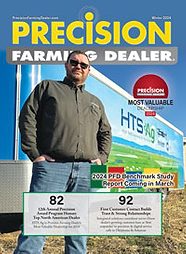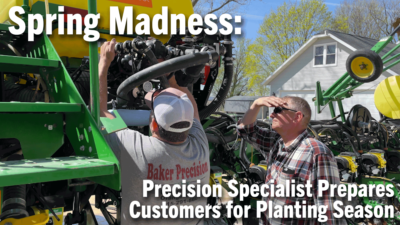Editor's Note: This is an excerpt from an article on AgWeek, by Jonathan Knuton, which examines the financial value of precision farming.
Paul Gunderson has heard it many times: Sure, precision agriculture sounds great, but will it help area farmers make money?
Gunderson, who came out of retirement to lead the Dakota Precision Ag Center in Devils Lake, N.D., has been working since 2005 to answer that question, which he frames in two parts.
“Do precision ag technologies work? Do they pay off, in terms of contributing to the net bottom line, for producers on the High Plains?” he says.His answers: Yes, they work. And, yes, they often, though not always, improve the bottom line.
“Based on our research, we’re seeing an improvement in net return of somewhere between 6 and 16 percent for High Plains growers,” he says.
In other words, a farmer who had been netting $100 per acre will net $106 to $116 per acre by adopting precision agriculture.
“That may not seem like much, but once you approach something like 10 percent, you start cash-flowing all the front-end cost of that technological investment,” he says.
Normally, a producer needs a payback of 6 to 8 percent to justify the cost, Gunderson says.
Farmers who have worked with the Devils Lake center “seem comfortable with our findings, that our findings are pretty close to their own sense of what’s occurring on their farm,” he says.
For now, at least, the center has completed its research into the precise use of seed and crop protection products on the High Plains. It’s moved into other areas of work, including developing online precision ag training modules and a slurry injection tool that injects liquid manure into a field utilizing the same mapping methods used with commercial fertilizer.
“We have a lot of beef cattle (in North Dakota) and even the dairy industry in this state makes extensive use of manure,” he says. “We’re going to have to go to injection technologies. We have to do so from a public health perspective.”
Gunderson hopes the online precision training modules will be ready by fall.
“I wish I could tell them (farmers and agronomists interested in precision ag) that it’s on our website right now. The data is all there, but we’re still assembling it,” he says.
The center’s website can be found here.
Gunderson also is interested in developing a college program that offers a two-year degree focusing on precision ag.
The article goes on to say:
Up-to-date statistics on the use of precision ag in the United States are hard to come by.
A 2011 report by the U.S. Department of Agriculture, which relied heavily on data from 2005 and 2006, found adoption of the main precision ag tools has been “mixed.”
The use of yield monitors, often a first step in the adoption of precision ag by grain crop farmers, rose to 40 to 45 percent of U.S. corn and soybean acres in 2005 and ’06, according to USDA’s Economic Research Service.
However, farmers have been slower to adopt other precision ag tools, the report said.
“Some of the possible factors behind this adoption lag include farm operator education, technical sophistication and farm management acumen,” the report said.
‘Cautious’ on High Plains
Gunderson describes farmers on the High Plains as “cautious” in their adoption of precision ag.
Some producers with relatively small farms wonder if they can justify the cost of precision ag technology.
Such farmers should consider retrofitting existing farm equipment with precision ag technology, which would hold down the cost, Gunderson says.
“If you do that (retrofit), you can make it work,” he says.
Farmers with modest acreage also should consider hiring a custom operator to do their planting, he says.
Admittedly, farmers can lose some control of when their crops are planted, since a custom operator isn’t always available when a farmer wants to plant, Gunderson says.
Still, hiring a custom operator would allow the use of precision agriculture by some farmers who otherwise couldn’t afford it, he says ...






Post a comment
Report Abusive Comment